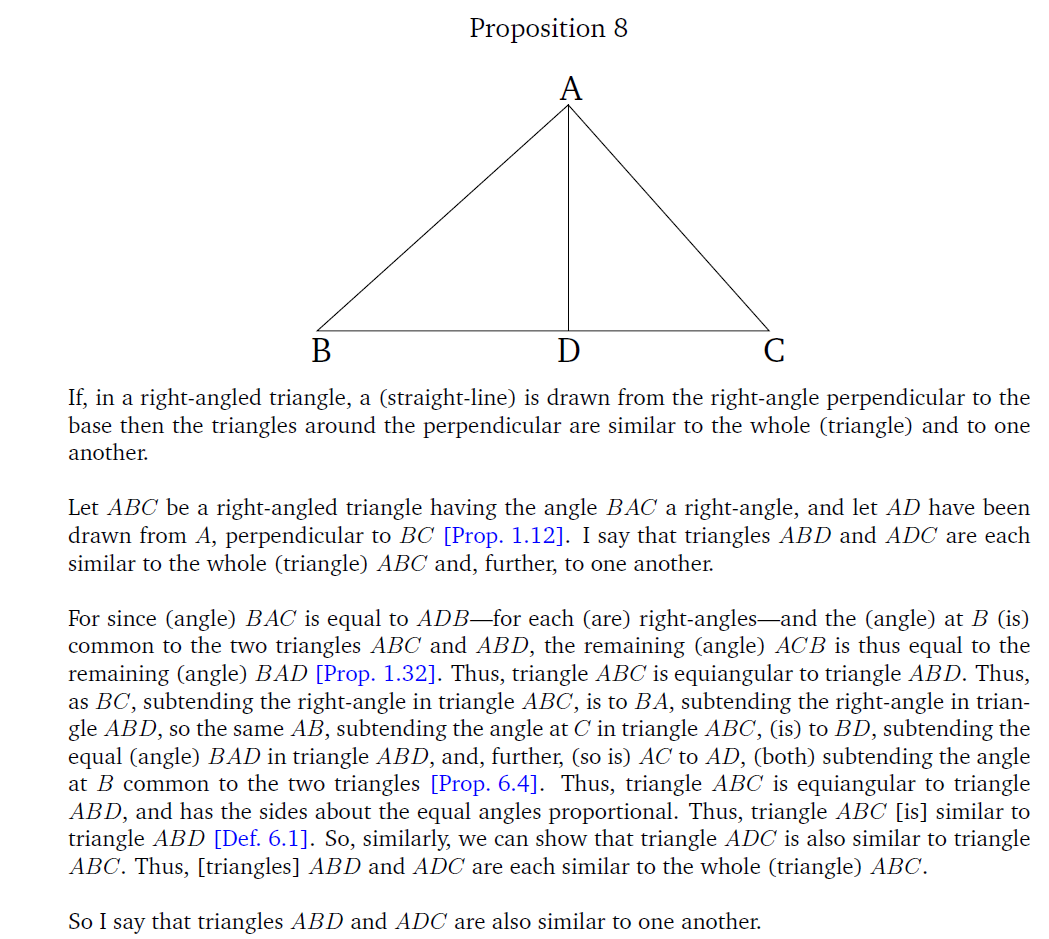(There may be something slightly satisfying about having them named in a way to suggest which angles are the same, but as this is by no means necessary and certainly cannot be relied upon, I wouldn't give it much credence. I wouldn't give a moment's thought to the order. I would just name the triangles in a 'legal' way).
We need to clarify something.
@Mondo is asking about a common
convention by which a statement about congruence or similarity is taken to imply correspondences by naming the figures in corresponding orders. For example, in
https://www.cliffsnotes.com/study-guides/geometry/triangles/congruent-triangles we are told, "Congruent triangles are named by listing their vertices in corresponding orders. In Figure , Δ
BAT ≅ Δ
ICE."
You're right that it is not
necessary; but it is not nonexistent. It is very much worth being aware of.
As I said, "Euclid ... may well not yet have used the modern
convention of naming figures in corresponding order." But it is very commonly
assumed today -- in fact, I had a hard time finding an explicit statement of this because when writers refer to corresponding parts, they tend to assume the convention without even mentioning it (especially in the context of similarity, which is taught after students have become accustomed to the convention for congruence). I find it being used without mention all over the place, wherever someone states a congruence and then lists corresponding parts without questioning them.
I would definitely give more than a moment's thought to the order! Without the convention, you have to figure out from context which parts correspond, so it is very useful when adhered to (and therefore confusing when not). Therefore, I would want to determine whether an author is using it or not, and then read with that knowledge. That is what we are discussing.


